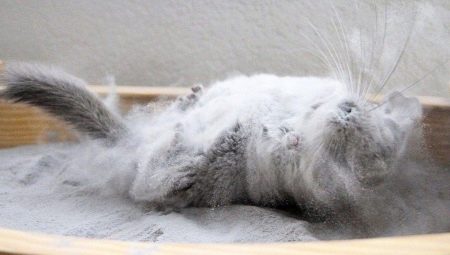Chinchilla is a small, very funny and furry animal. Everyone likes it, and most want to buy it for themselves. It is only necessary to provide him with the necessary living conditions so that it feels great and comfortable. And one of the main components of care is bathing.


What is it for?
Bathing is required to:
- clean the coat;
- remove excess hair and moisture;
- enjoy the process;
- relieve stress.
And also any owner of a small animal is interested in following this process. Bathing chinchillas is very funny and exciting. When the animal bathes in its bath, its hair becomes fluffy and gains shine.
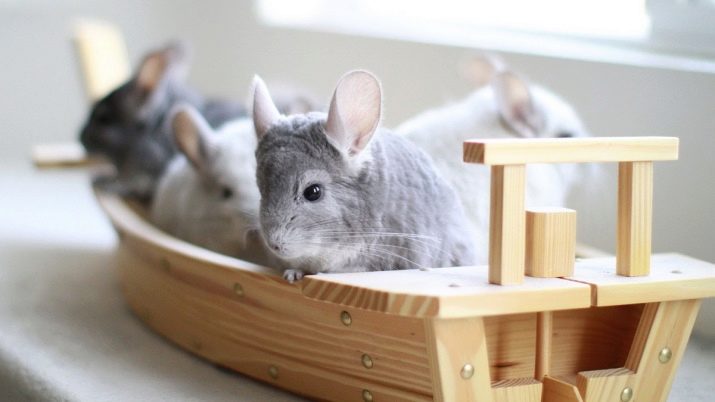
Can water be used?
Most people have a question, can you wash your pet in water. The answer to this question is no, basically it is impossible.
And all because they do not have sebaceous glands, and when the coat gets wet, the animal can catch a cold.
If somehow the wool is still wet, then it is worth immediately wrapping the chinchilla with a towel and drying it to the end. Despite this, there are situations when you still have to bathe an animal in water.
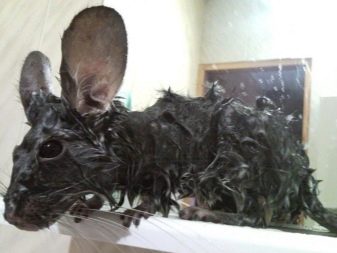
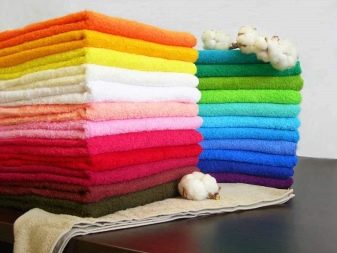
If your animal has stained its paws and tail, then you can take a small container with a calm soul, pour warm water there, and carefully remove the dirt with a rag. Next, wipe the pet with a towel and dry. You can use a hairdryer during drying. The main thing is that the speed is turned on to a minimum so as not to frighten the pet. The final action of this procedure is combing the hair. This process requires special care, and may take a long time.
In addition, washing an animal in water is allowed if it is very dirty, and can’t cope without your help.
This should be done as carefully as possible, water should not be allowed to enter the eyes and ears. It should also be warm, high temperatures are prohibited.
Then we dry the pet in the same way as in the first embodiment. Or you can simply transfer the cage to a warm place.
In any other case, your help will not be needed for the chinchilla. The animal takes care of itself independently, you only need to provide it with a special bathing suit with sand.

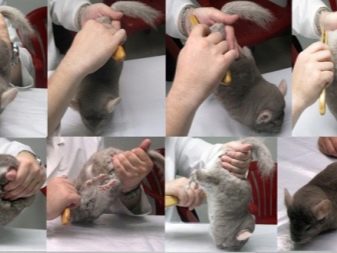
How to choose the right filler?
In nature, chinchilla does its bathing in volcanic dust. The name "sand" is rather arbitrary. Remember ordinary sand cannot be used. Its grains are very large and sharp. And they can hurt thick fur. In the event that you sift the sand, its grains will still be sharp. In addition, there is a huge number of quartz granules.
When you acquire volcanic dust, make sure that it does not shine.
A good quality product should be matte. It is quartz particles that provide shine.
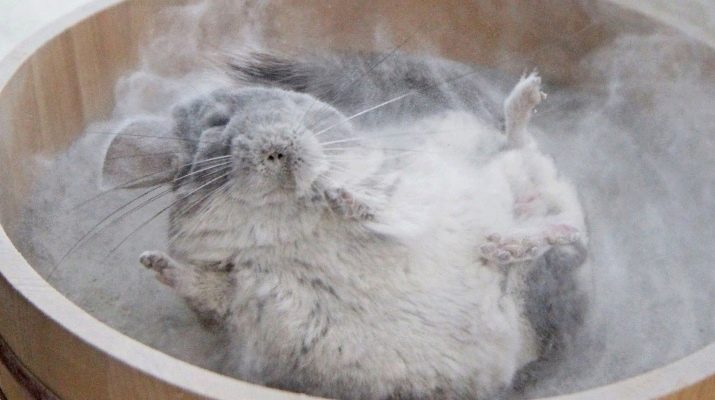
A good filler should absorb water well. If you add a little water to it, he should immediately absorb it. The resulting wet lump after drying, as a rule, retains its shape. Talc can be added to the sand for better cleaning of wool. In addition, feed sulfur is useful in order to prevent parasites from appearing. This should be resorted to if, in addition to the chinchilla, other animals live in the house. Of course, fleas do not live on these animals, because of the thick fur, but there are times when they appear on their tail.
A filler in which bactericidal and antifungal drugs are present will have a very good effect.
In addition, it will remove unpleasant odors. It is worth changing the filler after 10, a maximum of 15 baths. Its layer should be up to 5 cm.
These animals take baths very intensively, and an ordinary pan will not work, as dust will fly everywhere. Therefore, you will need to purchase a special bathing suit, which will not allow the sand to fly in all directions. And also you can do it yourself at home.
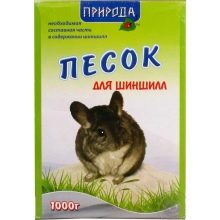


How to do it yourself?
So that your pet can swim, you will need a special bathing suit. It must be taken with high edges, since chinchillas are energetic. In specialized stores there is a wide selection of various options. If you have problems with their acquisition, then you can make the so-called bath from improvised materials.
In this case, the bathing is not necessary to leave in a cage on an ongoing basis. There it can be knocked over and contaminated.
The main task of bathing is not to let the sand crumble in different directions. And for these purposes, you can use such things as:
- Plastic container;
- a plastic bucket of the right size;
- containers for detergents;
- five liter cans.
The simplest options are a jar and a container, since everyone has these things in the house, and if not, it will not be difficult to get to the store and purchase them there. If you chose the option with a container, then close it to the end, and you cannot leave the animal there. But you can prevent dust from polluting the room.

Bucket
An ordinary plastic bucket is good in that it can be used periodically or left in the cage on an ongoing basis. It is worth giving preference to small, but capacious buckets.
You can do it as follows:
- take a bucket and make a hole on the side of the required diameter;
- we process the edges with sandpaper;
- the bottom of the hole should be located at a distance of 15-20 cm from the floor;
- pour the filler as follows: turn the bucket over with the lid down and add sand there.
This kind of bathing option is good because you can get a pet out of it without any problems, and thus, you will not scare the animal, and you will not be able to harm it. To get a chinchilla, we take a bucket, very carefully turn it upside down, open it and get it.
The negative aspects of the bucket include the fact that with a large amount of sand in the room there will be a lot of dust.
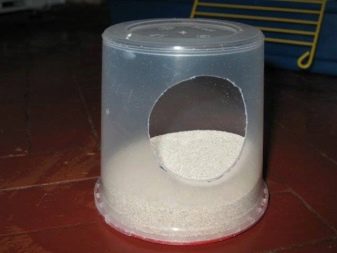

Detergent bottles and containers
Such capacities almost do not differ in characteristics. And batches from them are made in the same way.
Step-by-step instruction:
- we take a container and cut a hole of the right size so that the chinchilla can easily get in there;
- make a hole from the wide side;
- pass through the hole with sandpaper;
- we put the bathing so that the hole is at the top, and then we add sand;
- The last action is to launch the animal.
This option has its drawbacks, these are:
- light weight - the animal can overturn the tank without problems when it gets in or out of it;
- smooth surface - it will be difficult for the chinchilla to cling to its claws to get inside and get out of the bottle;
- weak resistance - the animal will chew on plastic, and if its pieces get into the body, there will be bad consequences.
If you compare plastic containers with glass jars, then the second has a plus. They can not be chewed. But banks are inconvenient in that during bathing procedures they can roll on the floor. There is also the possibility that the animal may break a jar and get injured on splinters.

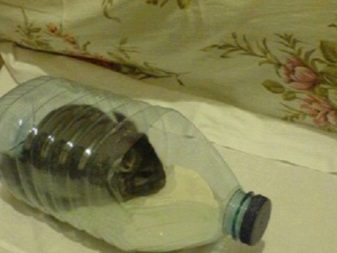
How often can I bathe?
It is best to do the swimming process in the evening. It should take about half an hour. This happens in this way: we take a bathing suit, add filler there, and put it in a cage, in a convenient place. And after this is done, the chinchilla herself climbs there and begins to swim. However, it can make various sounds. Thus, she shows her pleasure.
It is recommended to wash the animal a couple of times a week. But in the event that your animal quickly and often gets dirty, then it will have to be washed more often. And if various fungal diseases arose, the process becomes everyday.
Do not forget that in the case of a fungus, a veterinarian consultation is required. If the situation is difficult, bathing will have to stop for a while.
Chinchilla is an interesting and funny animal that, with proper care and care, will give you many wonderful moments, will cheer you up and become a true family friend. But remember that all this will be possible only if you provide the animal with proper and proper comprehensive care.
For more information about errors in bathing chinchillas, see below.
